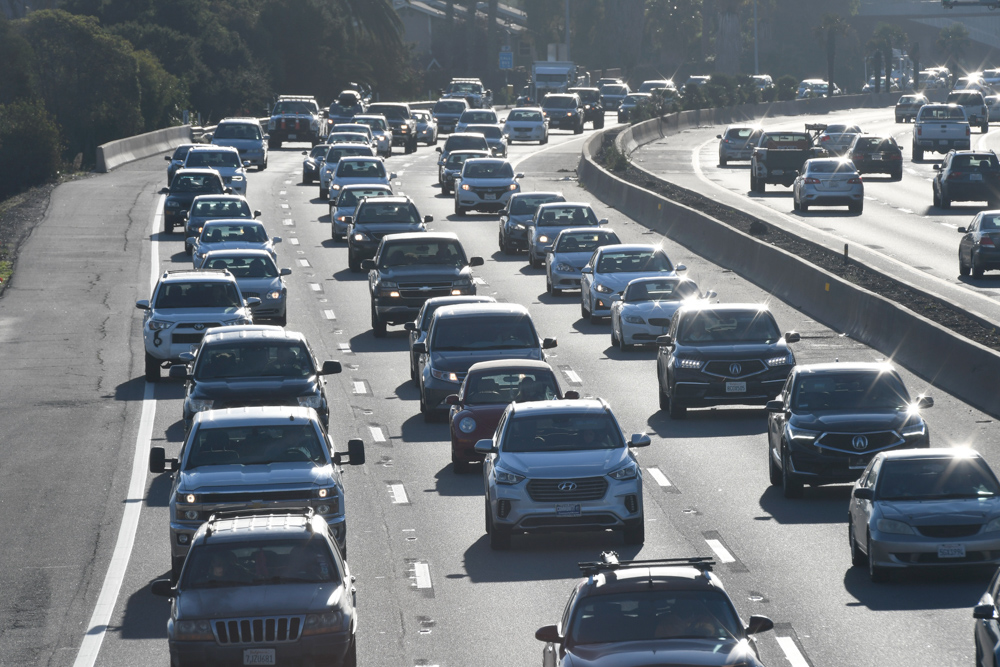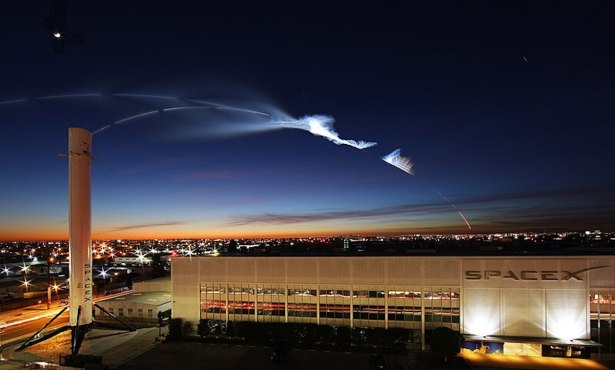Newsom Aims to Ban Fracking by 2024
Larger Goal Is Zero Emissions, Two Studies Released on How to Get There

Everyone alive today will be 24 years older when California stops pulling oil from below the ground in 2045. This ambitious goal was a coda to Governor Gavin Newsom’s announcement last Friday that the state would stop giving permits for fracking in 2024.
Environmental groups such as the Sierra Club and Food and Water Watch immediately found Newsom’s bans insufficient. Sierra Club’s Brandon Dawson called for a shorter timeline on both “to confront the climate crisis.” Alexandra Nagy, California director of Food & Water Watch, called the action a dodge by Newsom to put the burden on the state’s permitting agencies.
Though Newsom is currently facing a Republican-led recall effort (it crossed the petition threshold on Monday), his bans may go beyond political ploys. Two days before his April 23 announcement, two studies — looking at supply and demand — commissioned by the state EPA were published. The UC Institute of Transportation Studies — composed of UC Davis, Berkeley, L.A., and Irvine — examined vehicles large and small and the infrastructure needed to support a switch to zero carbon. The second — from UCSB — looked at options in reducing supply and effects on health and equity. Kyle Meng, an economist and head of Climate and Energy at UCSB, said their task was more to perform an analysis that would give the state facts on which to base decisions, rather than to provide solutions. A third study specifically on a changing workforce is due in the fall, Dr. Meng explained.
Transportation accounts for about half of California’s greenhouse gas emissions and is a stubbornly entrenched factor in our daily lives, Meng noted. Nonetheless, fossil-fuel production has been declining since the 1980s, as have emissions since the mid 2000s.
“There are a million ways to decarbonize the economy,” Meng said. And they all know how hard this will be, he added, speaking of the luxuries of modern industrial life that depend on fossil fuels: how we get to work, how we turn on the lights, and the jobs they supply.
As well, change was not likely to occur absent government policy, the Institute of Transportation study commented: “This is because many of the external costs of transportation — such as congestion, pollution, and GHG emissions — are not paid for by the businesses or individuals who make key decisions.” People don’t make decision based on total costs of ownership either, a distinction seen in electric vehicles. They cost more initially, but over the course of a decade, the operating costs are less. But just as an example, a key barrier for plug-in vehicles are charging stations at apartment buildings, workplaces, and along highways, the study observed.


Carbon neutrality, or when the amount of carbon emitted is all absorbed or captured, is a goal for 2045 set by Gov. Jerry Brown by executive order in 2018; Gov. Newsom’s no-more-extraction order is one means toward this end. Another is that zero-emission vehicles are to be 100 percent of vehicle sales in the state by 2040. In addition to incentive policies to address sale prices and to put more clean vehicles into communities overburdened with pollution from oil production or highways, the transportation study, which runs to over 400 pages and extends into roads and mobility, also noted the need to ensure used gas and diesel vehicles are not imported into California to circumvent the goal.
While the studies counted 117 direct oil-industry jobs in Santa Barbara County — a fairly small producer of about 3 million barrels per year amid the production of about 110 million barrels statewide — Kevin Slagle of the Western States Petroleum Association said the impact of taking those jobs away would in turn affect thousands of other people and about $5 million in tax revenue.
“We want to be part of the solution,” said Slagle, of his members’ efforts to make their carbon footprint smaller, invest in biofuel production, and transition to solar. In rural areas reliant on propane, for instance, this news of a ban might not go over so well. “Electric vehicle chargers are not very available in areas like the Central Valley and rural areas,” Slagle said. “We need options for everybody. We need every kind of energy fueling us toward that end goal.”
The ban order was the wrong approach, he believed: “When they say we want to eliminate your industry, they’re saying we don’t need you as part of the solution.”
Slagle and Meng were in agreement that moving California’s oil dependence to other states was not a solution. Consuming another state’s oil products “just displaces California’s emissions,” Meng noted, and it was a wash if California were full of electric vehicles but continued to export crude oil. One of the things his group’s study looks at is the continuing need for liquid fuels, like jet fuel, and the refining that would continue in renewable fuels.
California has led the world in curbing emissions, which the Biden administration recognized this week in reversing Trump’s attempt to stop enforcement of the state’s rigorous regulations. But Newsom’s fracking ban announcement has its skeptics: “It’s curious that a year ago he couldn’t do it,” said Slagle. The governor had kicked the responsibility for ending fracking to the Legislature last October but had been criticized for not putting any political muscle behind the ask. Senators Scott Wiener and Monique Limón sponsored a bill to do just that, but it failed to pass out of its first committee.
In a joint statement, Wiener and Limón agreed that 2045 was too far away, but “at least having a set end date will trigger the long-overdue conversation about what a transition away from oil looks like.” They blamed the lack of progress on political paralysis and again demanded that a 2,500-foot buffer protect communities from oil field activity: “Our frontline communities are paying the price every day for our addiction to oil.”
Correction: Alexandra Nagy is California director for Food & Water Watch, not the national organization.




You must be logged in to post a comment.